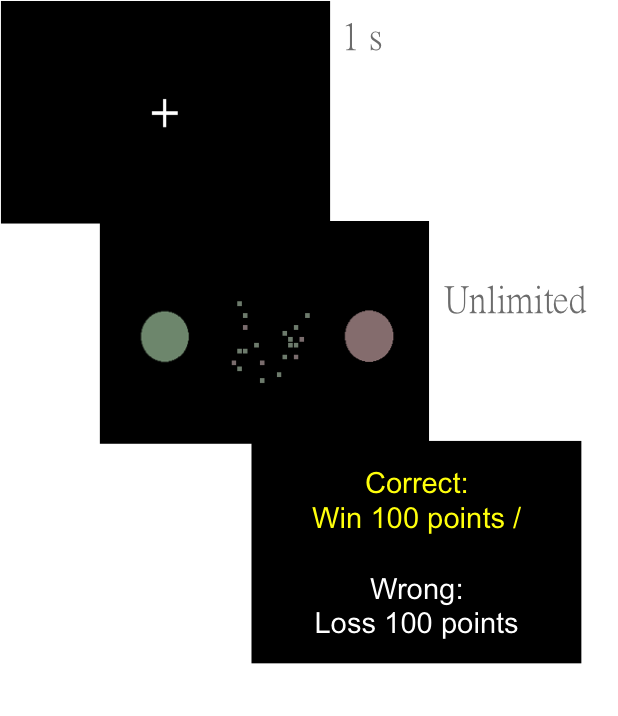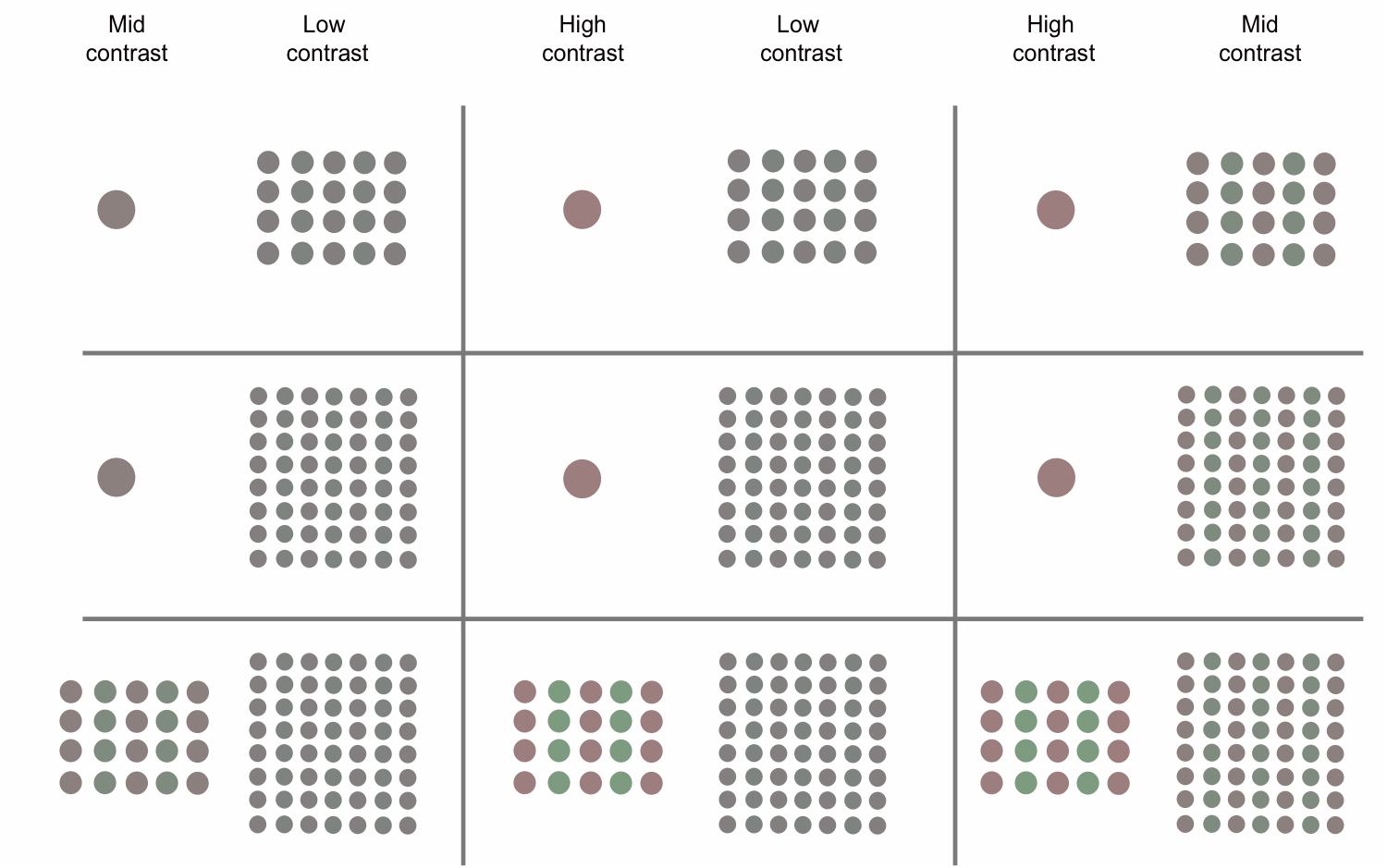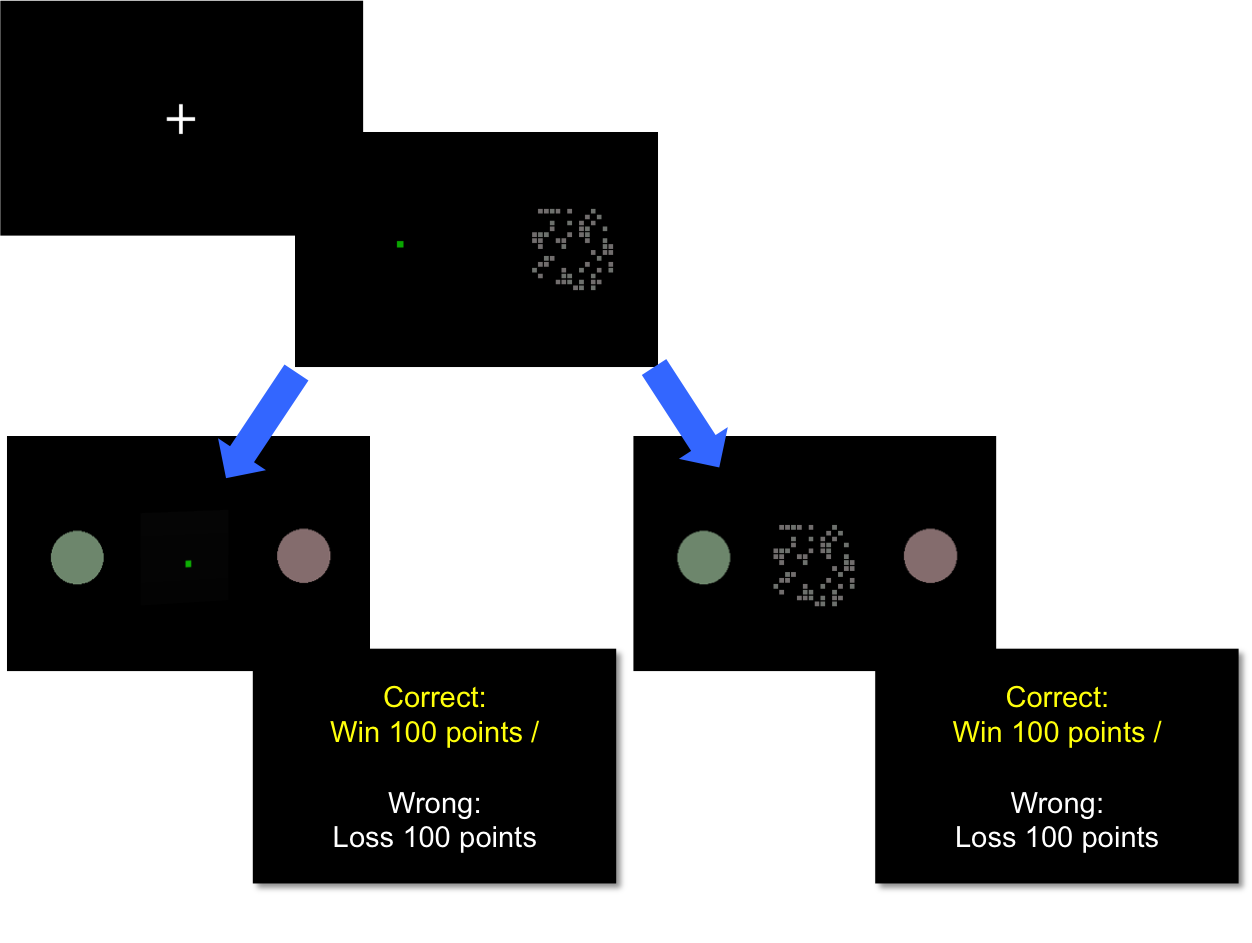Many decisions we face involve using explicit information about the different options under consideration to make a choice. Critically, information can be evaluated based on its distinct properties, such as the quality (signal-to-noise ratio) of individual datum and the sample size (quantity) of the data. While tremendous progress has been made in understanding the weights people assign to these properties in judgment and decision making, what remains elusive is the implicit preference ordering of them.
|
To address this question, we designed a novel lottery decision task where in order to receive a reward from a lottery, subjects had to make a correct perceptual judgment based on noisy visual information in which the quality of individual datum and quantity of data were independently manipulated. A distinct feature of the task is admissibility – for each pair of lotteries subjects chose from, no lottery dominated in both quality and quantity. |

There are two sessions in our study: Perceptual judgment task and Perceptual decision task.
In this study, subjects were instructed that a box consisted of a total of 100 red and green balls. On each trial, there were either more green balls or more red balls. The subjects did not know which ball – red or green – had more in number. In order to provide information about the box, we sampled from the box and presented the samples as red or green dots on the screen. His or her task was to guess whether there were more red balls or green balls in the box. The odds of red was either 57/43 or 43/57 and this information was not revealed to the subjects. |
 |
We independently manipulated the quantity and quality of information. There were 3 levels of quality and 3 levels of quantity, forming a total of 9 different stimuli. Information quantity was manipulated by the amount of the sample – the number of colored dots – presented to the subjects ([1 dot, 20 dots, 60 dots]). Information quality was manipulated by adding grayness to the colored dots such that the higher the grayness level the harder it becomes to discriminate between green and red dots. The levels in both quantity and quality were determined based on pilot results and ideal-observer simulations such that different levels result in different performance, i.e. probability of making a correct judgment.
|

Session 1 : Perceptual judgment task |
 |
 |
In this session, on each trial, subjects faced one of the 9 stimuli and had to judge the color of the dominant ball. She or he was rewarded for making a correct judgment.
The goal of this session was to train the subjects to perform the task. Through training, subjects were provided the opportunity to develop knowledge about his or her own performance.
The session consisted of 10 blocks of 36 trials each. Each of the 9 stimulus type had 4 trials in each block. The order of trials was randomized in each block of trials. |

Session 2 : Perceptual decision task |
 |
Session 2 was the main focus of the experiment. Its goal was to investigate preference for the quantity or quality of information.
On each trial, subjects were presented with a pair of stimuli and had to choose between them. There were 9 possible pairs of stimuli created for the purpose of investigating preference for quantity or quality.In each pair, no stimulus dominated the other in both quantity and quality. A stimulus with better quantity must be worse in quality than the other stimulus and vice versa. Once the subjects indicated his or her choice, she or he had to perform the perceptual judgment task just as in Session 1 on the chosen stimulus.
The session consisted of 8 blocks. Each block had 36 tradeoff combinations and 24 random combinations. Each tradeoff combination was allocated with equal number of blocks with order randomized differently for each subject. |
|





